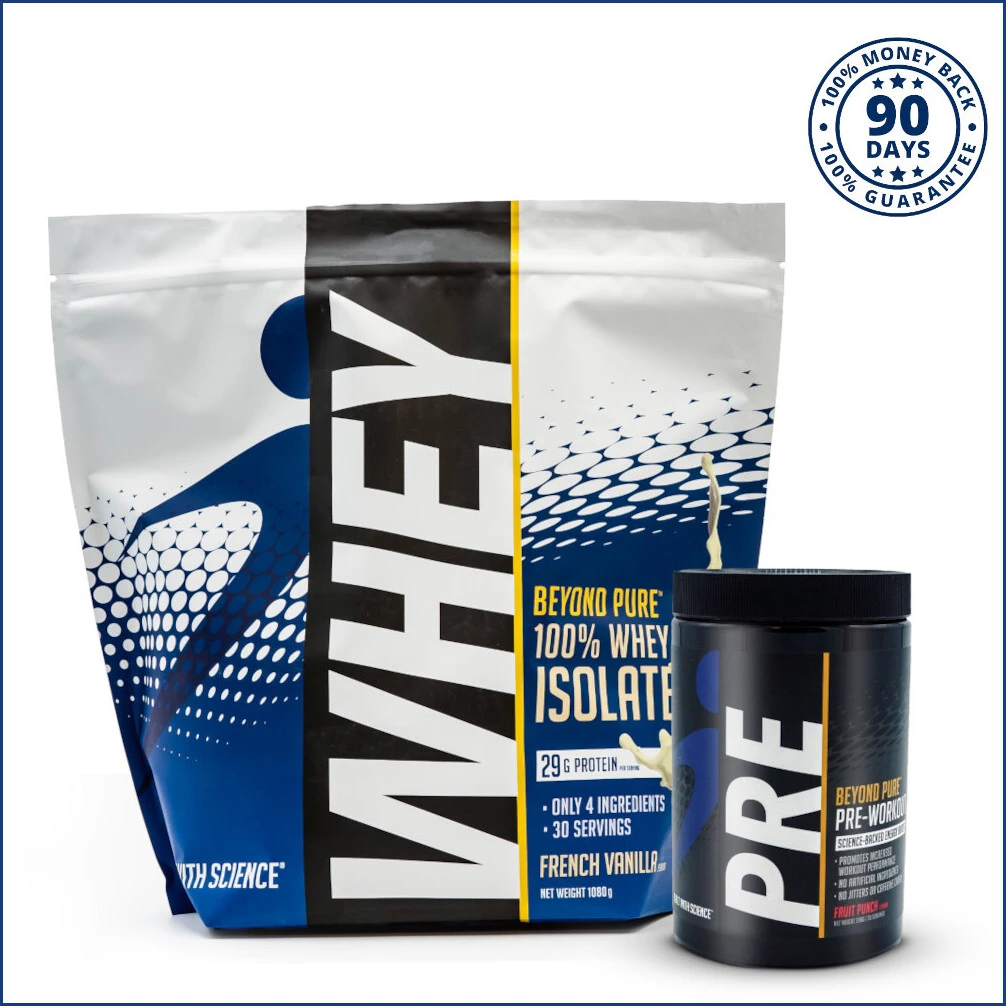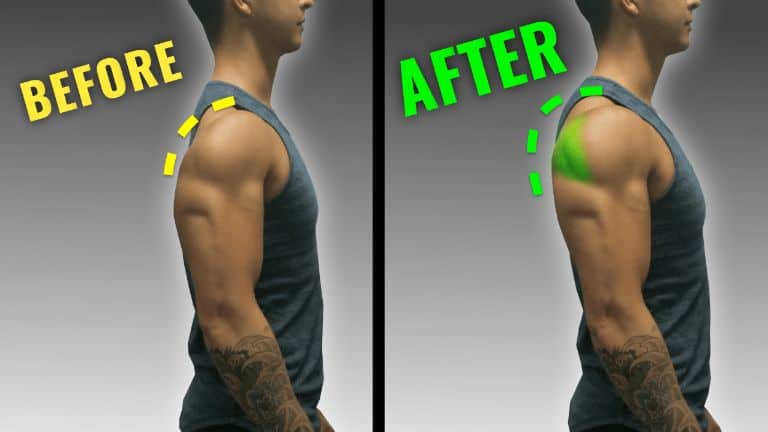
How To Grow Your Rear Delts Fast (4 Key Exercises You're Not Doing)
Let’s face it, most of us have underdeveloped rear delts. In this article, you'll learn about the importance of developing your rear delts, and three key exercises you're not doing.
We have underdeveloped rear delts mainly because we either neglect them or we don’t train them as effectively as we could be.
Which is detrimental since the rear delts are not only the key to completing fully developed, 3D looking shoulders but have also been shown to play an important role in boosting shoulder stability and reducing injury potential as well.
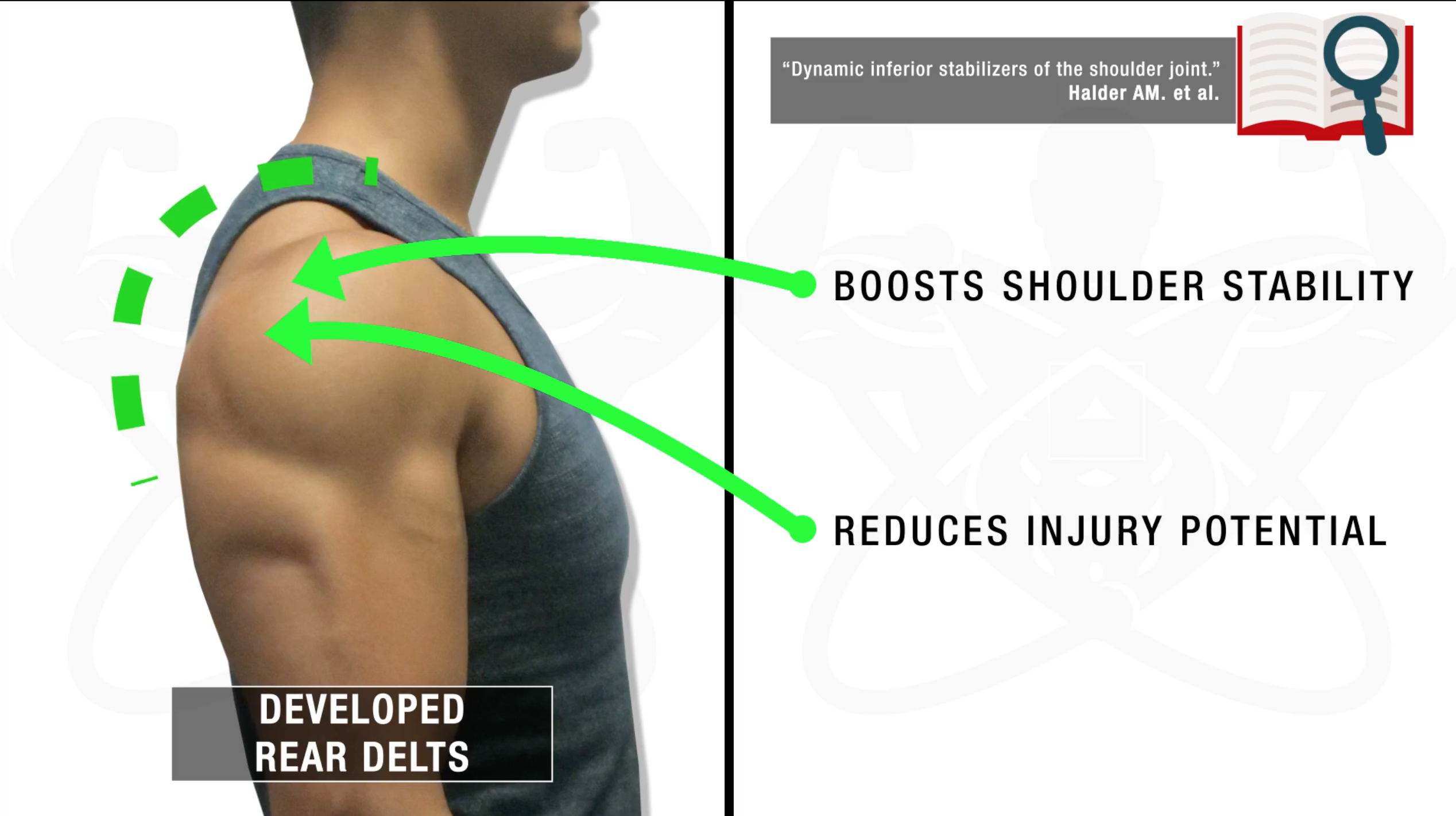
And although research indicates that it’s true that many compounds pulling movements like the lat pulldown and seated row will involve the rear delts quite a bit.
EMG data shows that rear delt isolation exercises such as the reverse pec deck, for example, elicits far greater activation of the rear delts.
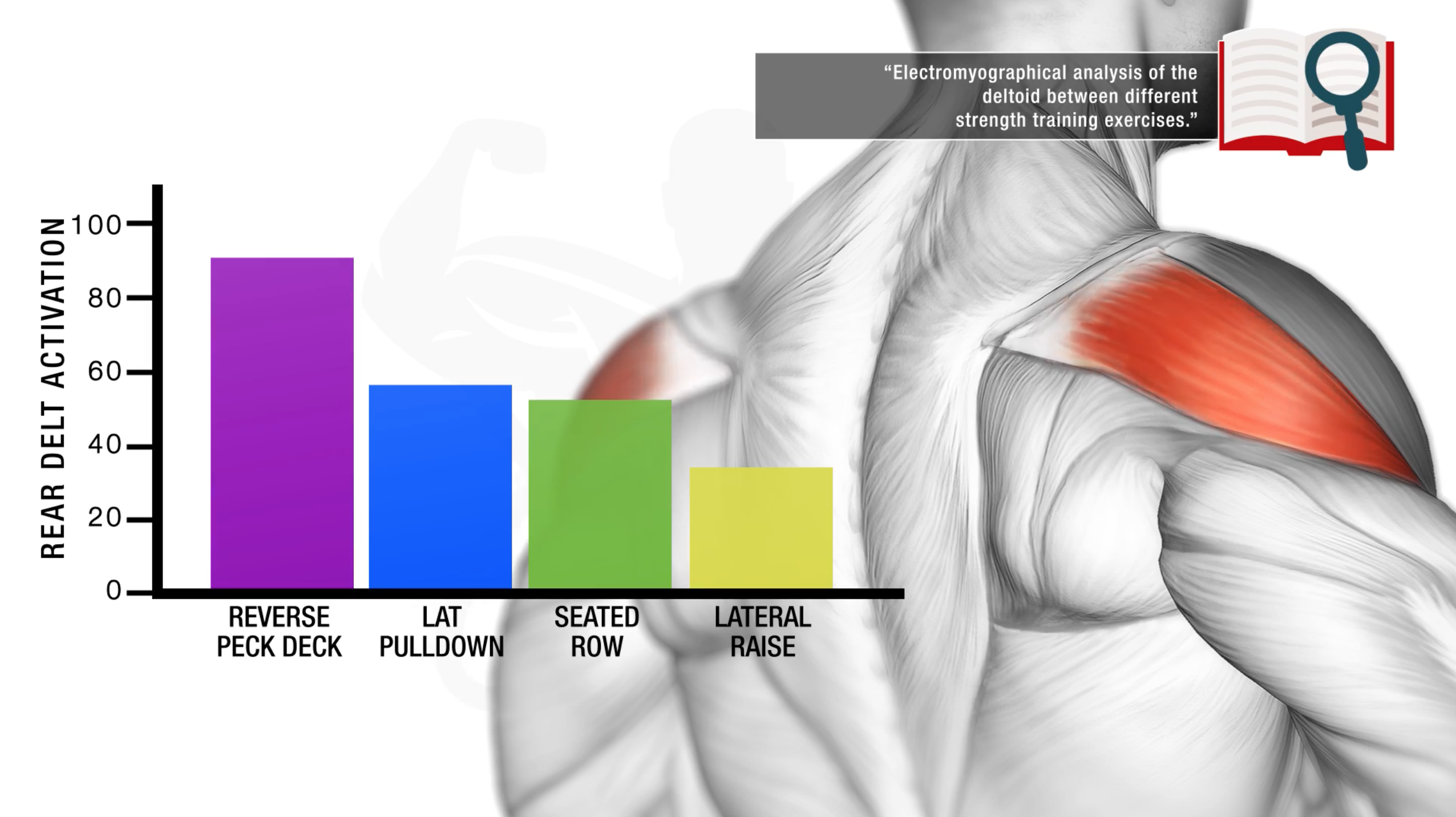
Simply meaning that rear delt exercises should definitely be added into your routine.
Adding in a few sets of a suboptimal exercise like dumbbell reverse flies after your workout just isn’t going to cut it.
Instead, it’s vital that you both choose the right rear delt exercises and perform them in a way that maximally activates the rear delts.
At the same time, it's important to prevent stronger muscle groups like the traps and lats taking over the movement. Too much activation of stronger muscle groups will prevent your rear delts getting the volume they need.
In this article, I’ll show you exactly how to do so with a few key exercises you’ve likely never tried.
These exercises not only train the rear delts optimally but will help you minimize the involvement of other muscle groups as well.
Looking to learn how you can target each of your muscle groups appropriately (and effectively) – in addition to the rear delts? No worries. I’ve got you. I’ve designed every program of mine to be an all-in-one, science-based process that’ll get you to your dream physique FAST:
Click the button below to take my analysis quiz to discover the best program for you:
↓
1) Barbell High Row
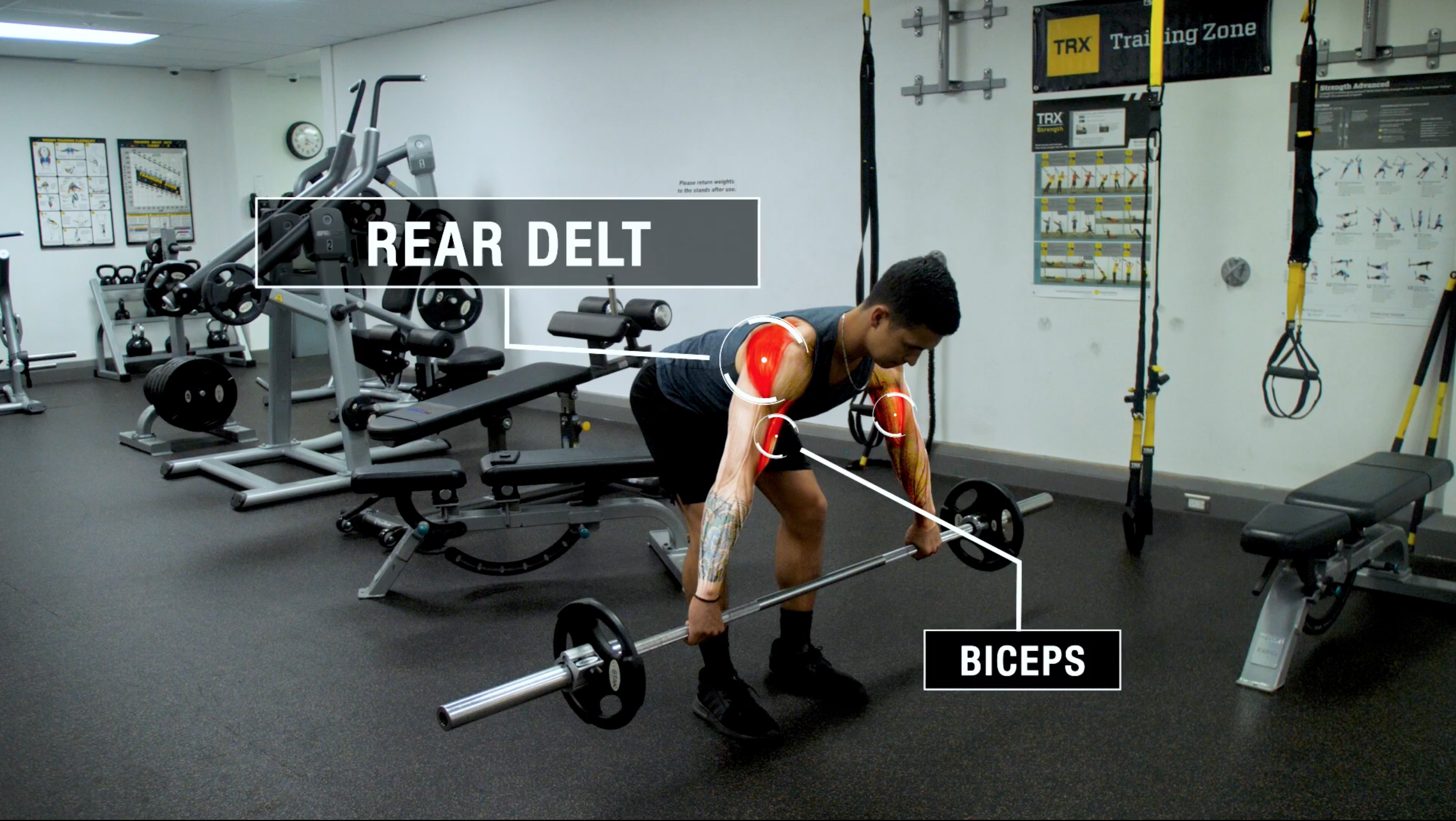
The first exercise is going to be the barbell high row, which when performed correctly, will effectively hit the rear delts with some involvement of the biceps as well.
And for a variety of reasons, this exercise is going to do a much better job at developing the rear delts than something like reverse flies, for example.
Because by bending the elbows as opposed to keeping them straight, we biomechanically put the rear delts in a stronger position AND can also now drive the elbows back behind the body more than we can with straight arms, which is one of the all-important movement functions of the rear delt and the key to fully activating it.
In addition, this also enables us to now work with much heavier loads, which is beneficial since research indicates that the deltoid muscle as a whole is roughly a 50/50 mix of type I and type II muscle fibers.
Therefore is likely best stimulated by a mix of both heavier weight for lower reps as we do with this exercise AND lighter weights for higher reps as we’ll do later on.
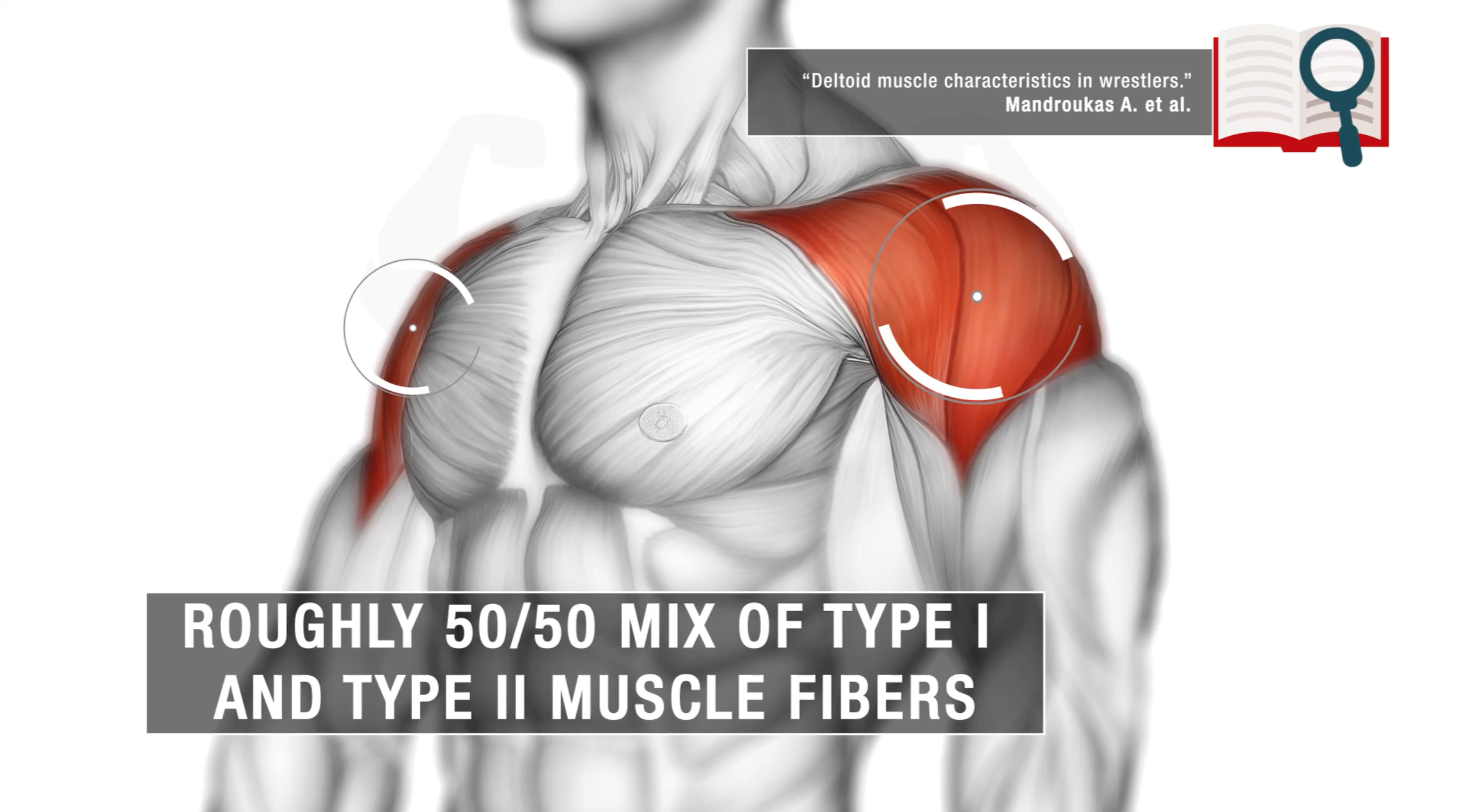
Grab a barbell with a wide grip such that your arms are about 45 degrees out from your sides when standing.
Next, set up how you would for a normal barbell row by slightly bending the knees and hinging at the hips until your back is almost parallel to the ground.
Now at the starting position, think about pushing your fists down into the floor in order to protract your shoulder blades, as this will help prevent your traps from taking over the movement.
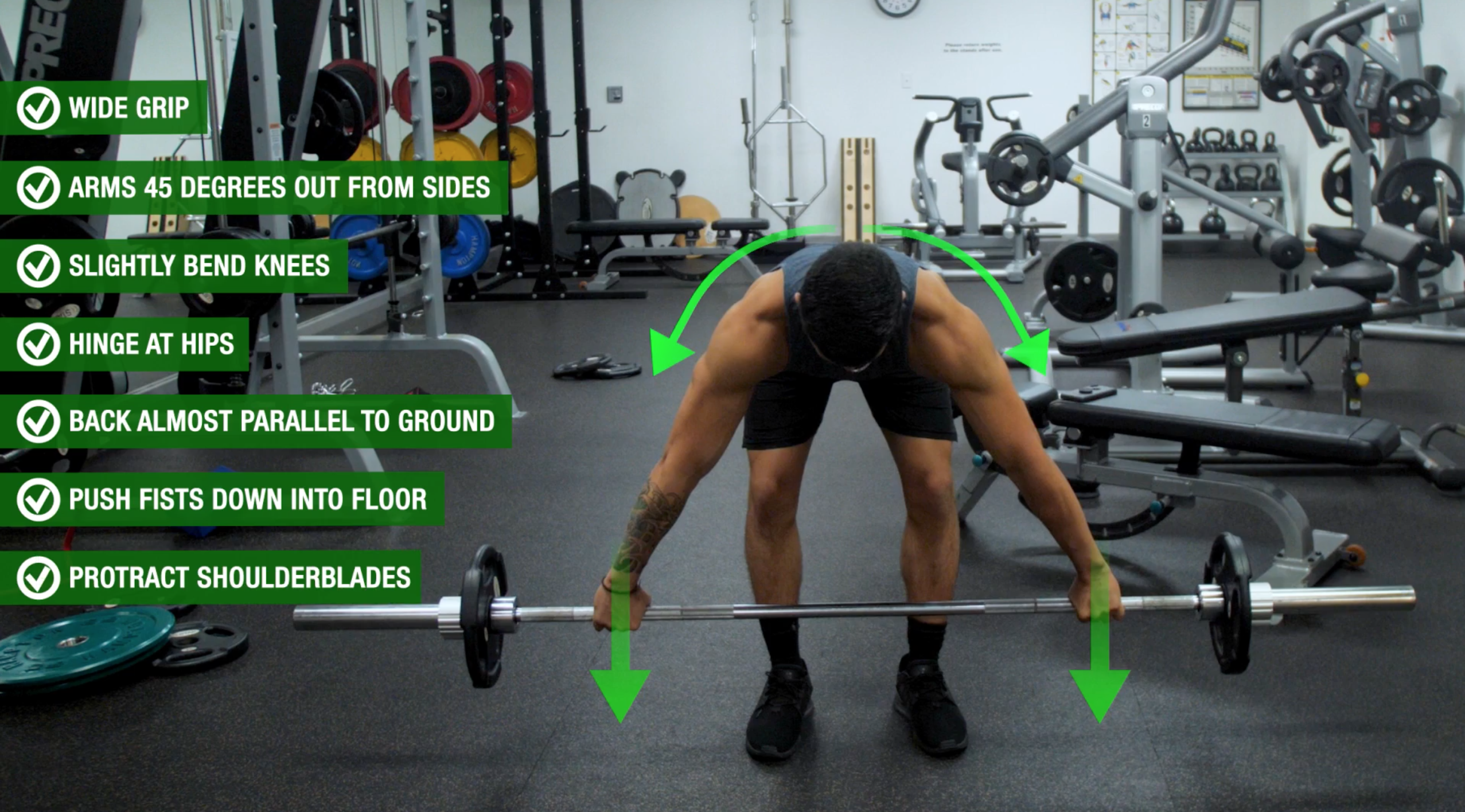
Then, lift the weight up towards your upper chest with your elbows kept high.
As you lift up, think about driving the elbows up and back behind the body as much as possible.
At the top position, your elbows should be at a 90-degree angle
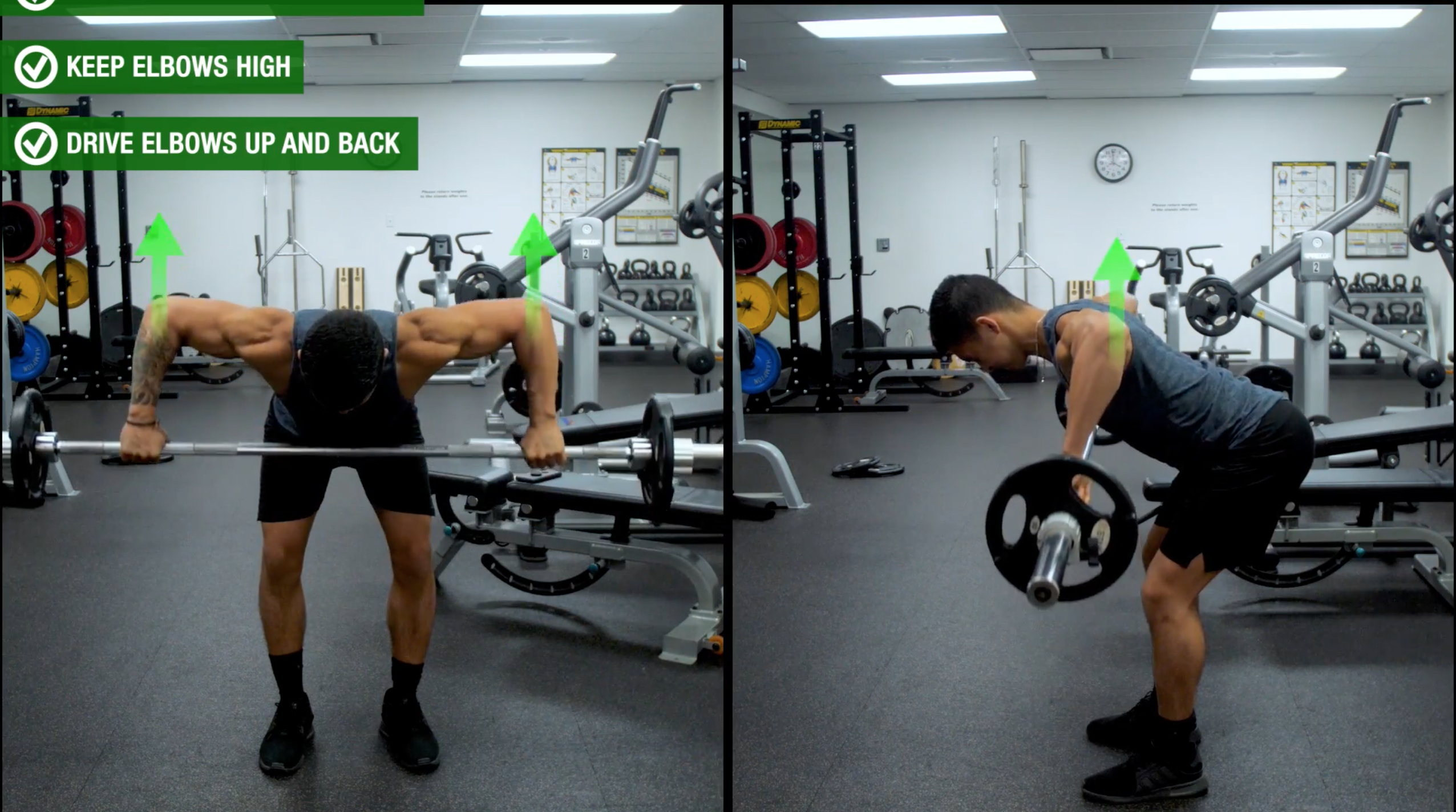 .
.
Pause here briefly while contracting the rear delts before coming back down.
I suggest using wrist straps for this movement. Wrist straps help to minimize the involvement of the biceps and traps. This helps to isolate the rear delts better.
For this movement, use relatively heavy weight with a moderate rep range of 6-12 reps. Slowly increase the weight overtime as needed.
You can do this same movement using a lat pulldown attachment if this exercise is too taxing.
If you have a lower back injury, you can do this exercise on a seated row machine to decrease excess lower back stress.
2) Dumbbell Incline Row
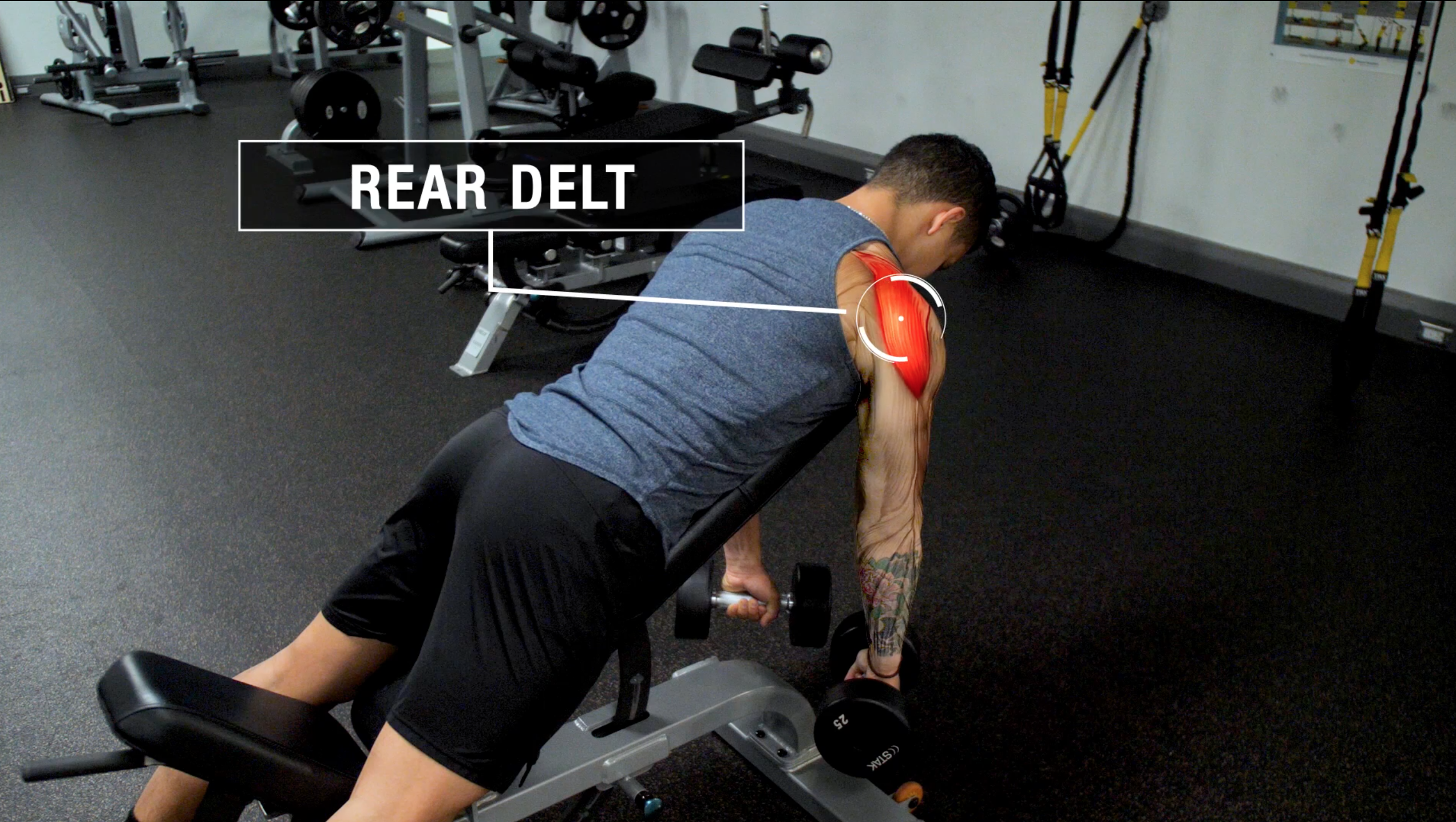
The next exercise, the dumbbell incline row, is another heavy movement that will effectively hit the rear delts.
This exercise incorporates the many movement functions of the rear delts and also additional external rotation, which emphasizes the rear delts.
This has been shown in research such as this EMG study by the American Council of Exercise, which analyzed a similar but less effective movement, to elicit high rear delt activation when compared to other rear delt exercises.
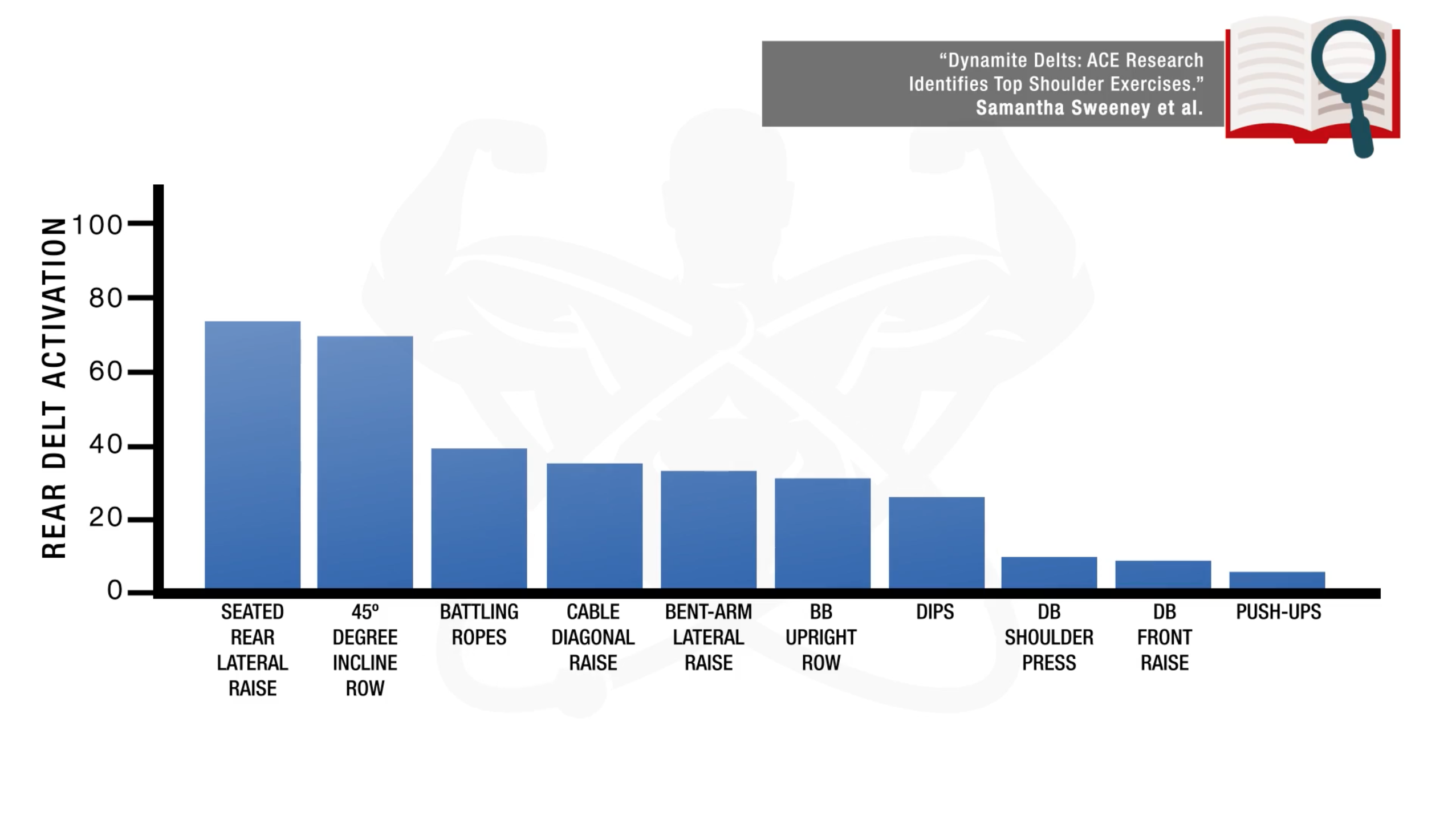
Now to perform it, first set up a bench to an incline of roughly 30 degrees.
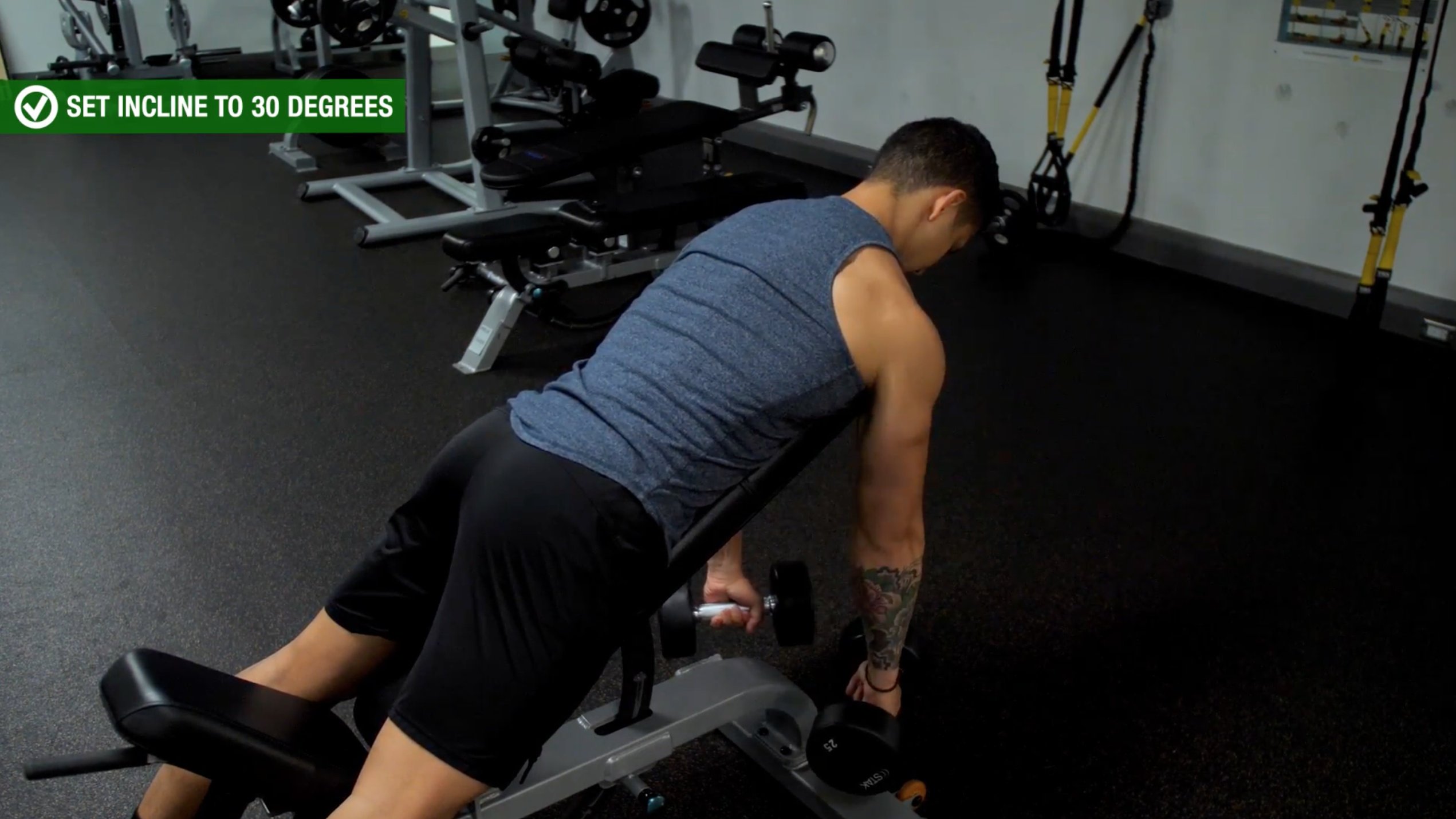
If you set this too high, you’ll activate your side delts and back muscles. If you set it too low, this will prevent you from achieving a full range of motion.
Next, grab a pair of dumbbells in each hand and then lift the dumbbells up with your elbows angled out to your sides rather than tucked in, as anatomical analyses indicate that this puts the rear delts in a stronger position and prevents the lats from taking over.
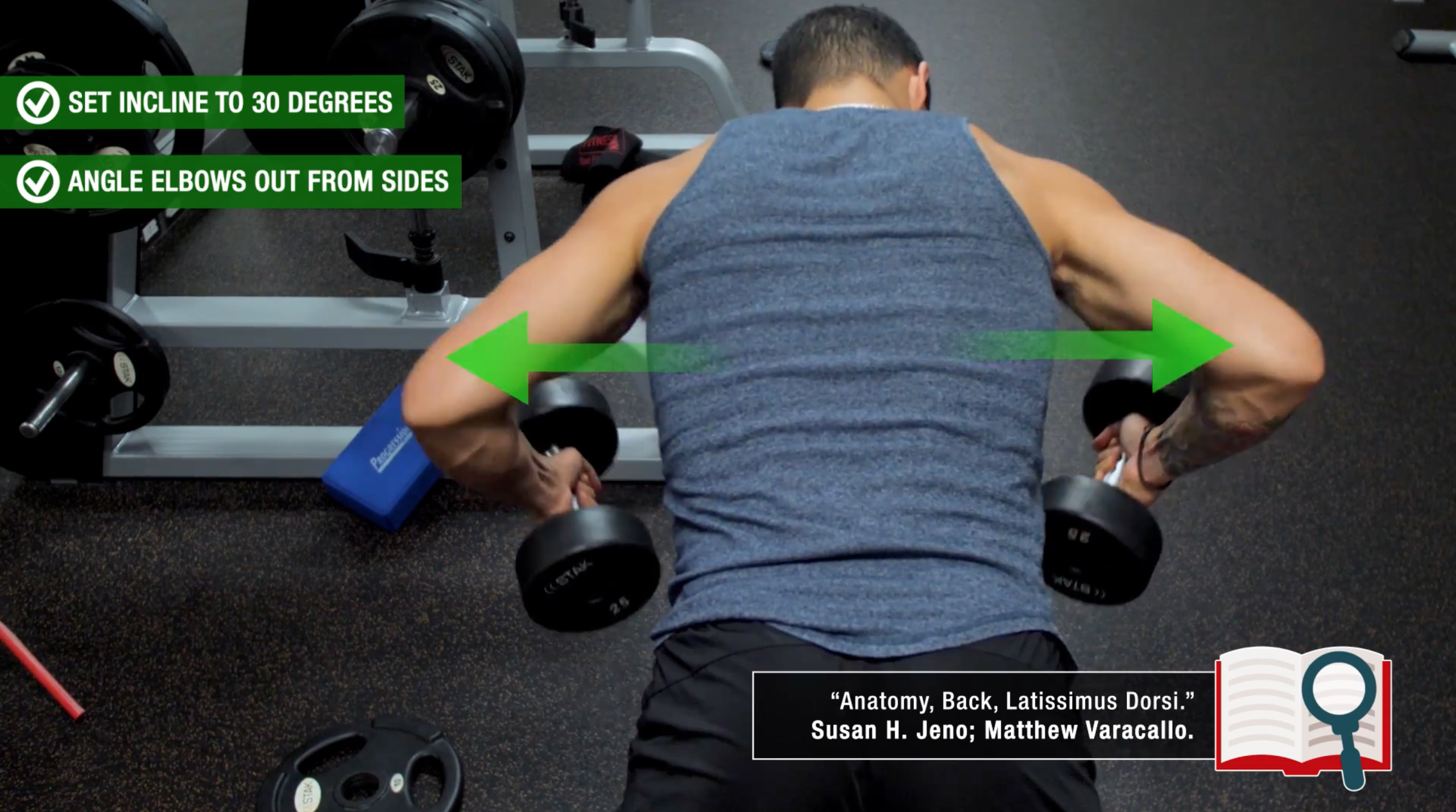
Now as you pull, you’ll want to externally rotate your shoulder by turning your wrists outwards during each rep. Hold the top position briefly while fully contracting your rear delts before coming back down.
Think about driving the elbows up and behind the body in order to activate the rear delts every rep.
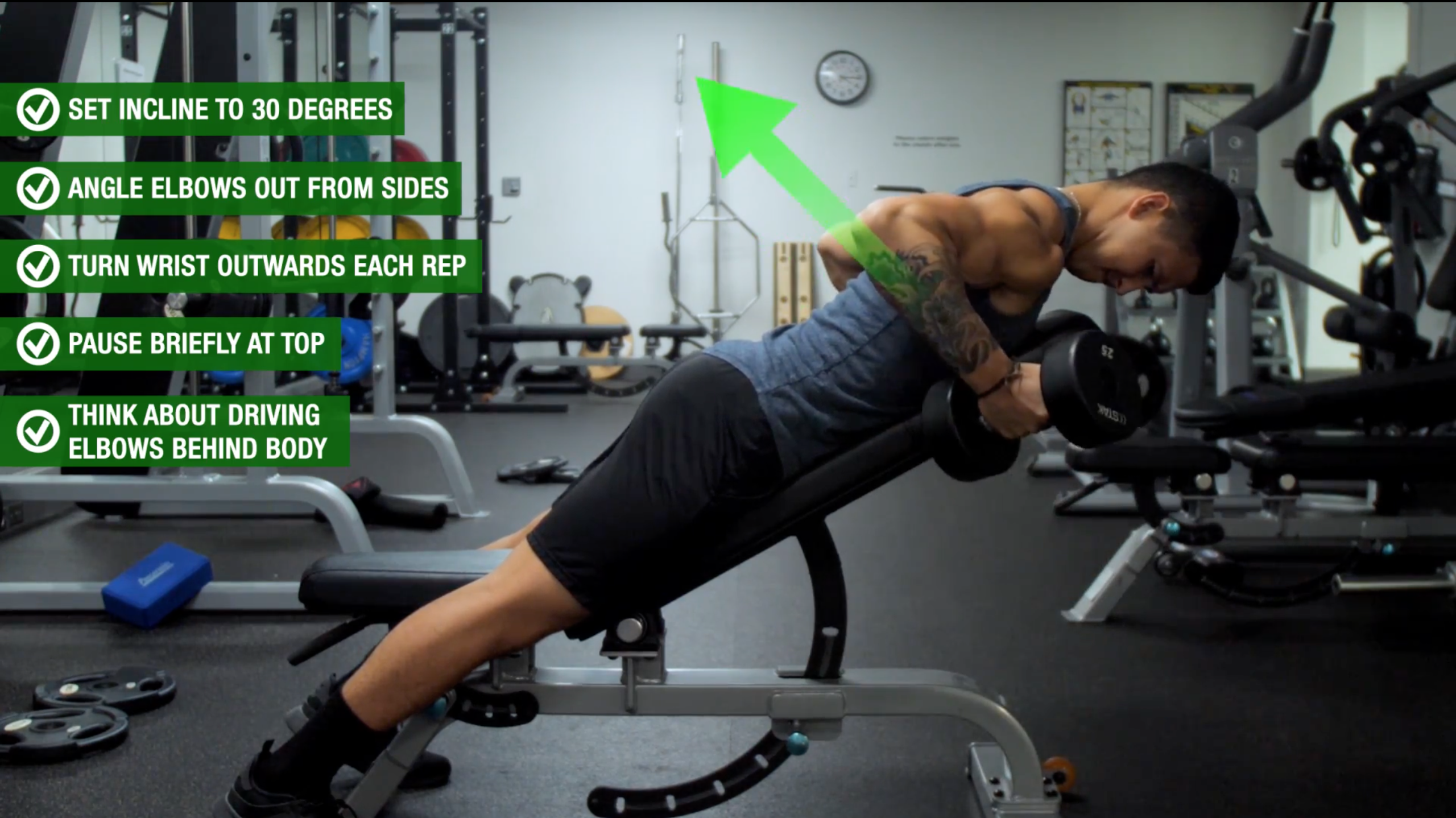
Straps can also be used here as well to minimize the involvement of other muscle groups.
I suggest using relatively heavier weight for this movement and a moderate rep range of roughly 6-12 reps.
Never sure if you're performing your rear delt exercises correctly - and optimally for muscle growth in the gym? Don't worry. Our 3-on-1 coaching program can help. My team of experts here at BWS – and I – will always take the time to explain the dos and do not's of each exercise's execution in your personalized training program. Find out more about how we can help you achieve your dream physique below:
Click the button below to find out more about the 3-on-1 coaching program:
↓
3) Lying Face Pulls
The third exercise is the lying face pull. This exercise is great to hit the rear delts with a lighter weight and higher reps.
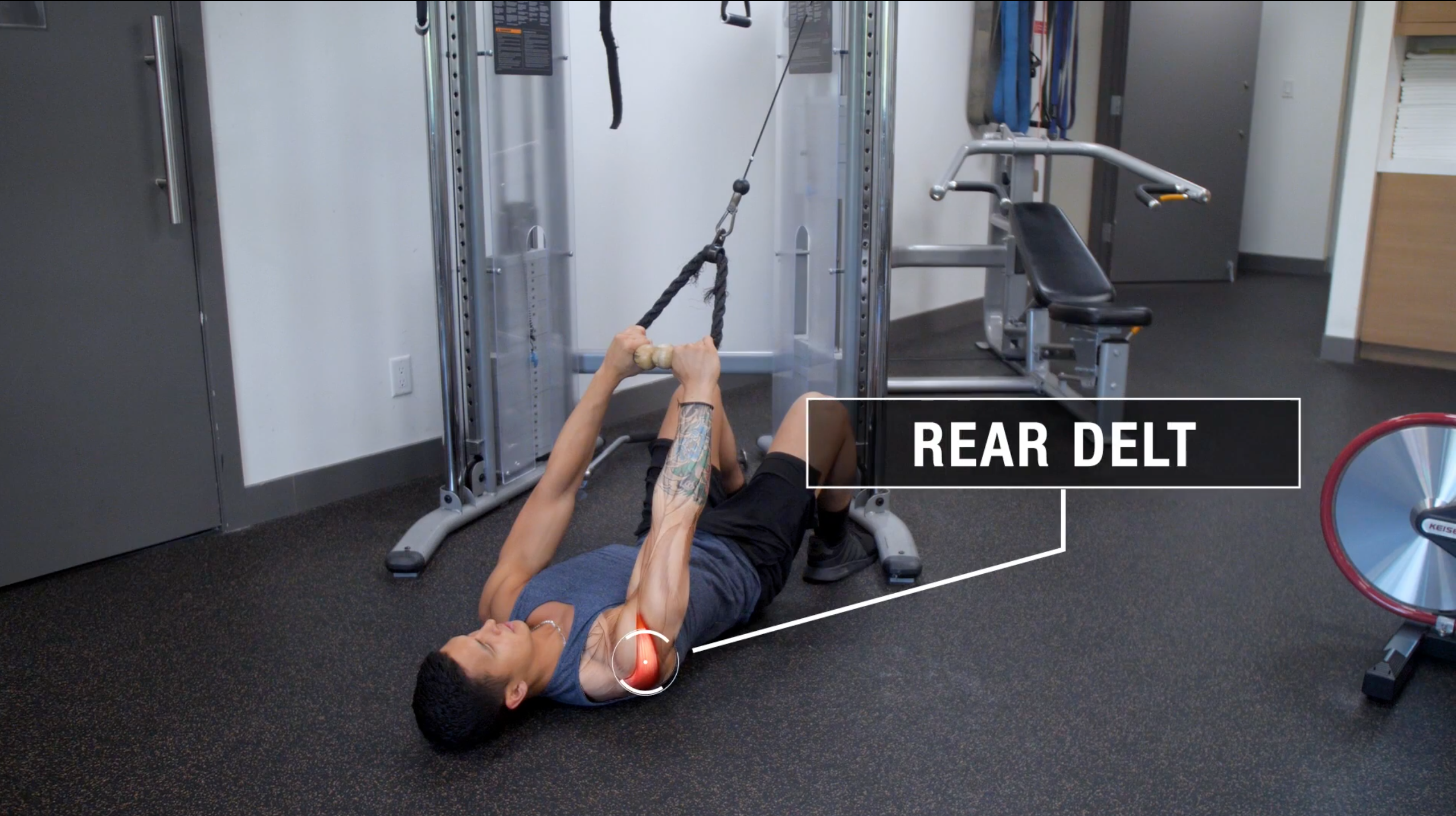
Most of us know that the traditional standing or kneeling rope face pull is great for the rotator cuff. The problem is that the traps - especially the upper traps - take over this movement.
However, by knowing that the upper traps are more active during upright exercises since they work as a postural muscle, we can modify the face pull by performing it laying on the ground instead.
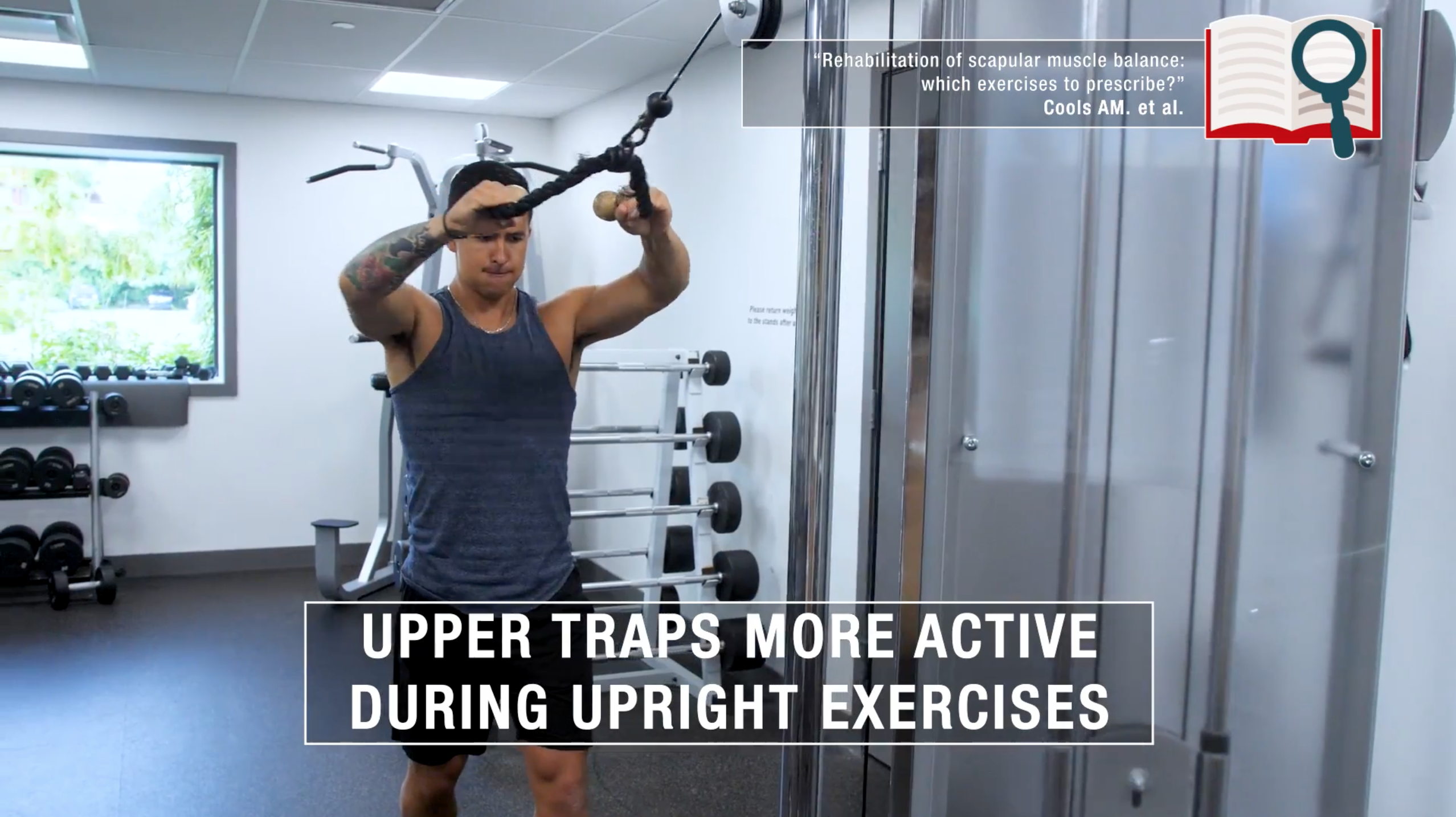
Lying on the ground eliminates the effects of gravity. Doing so will decrease excessive activation of the upper traps, aiding in optimal rear delt isolation.
And to perform it, you simply perform a regular face pull but laying on your back instead.
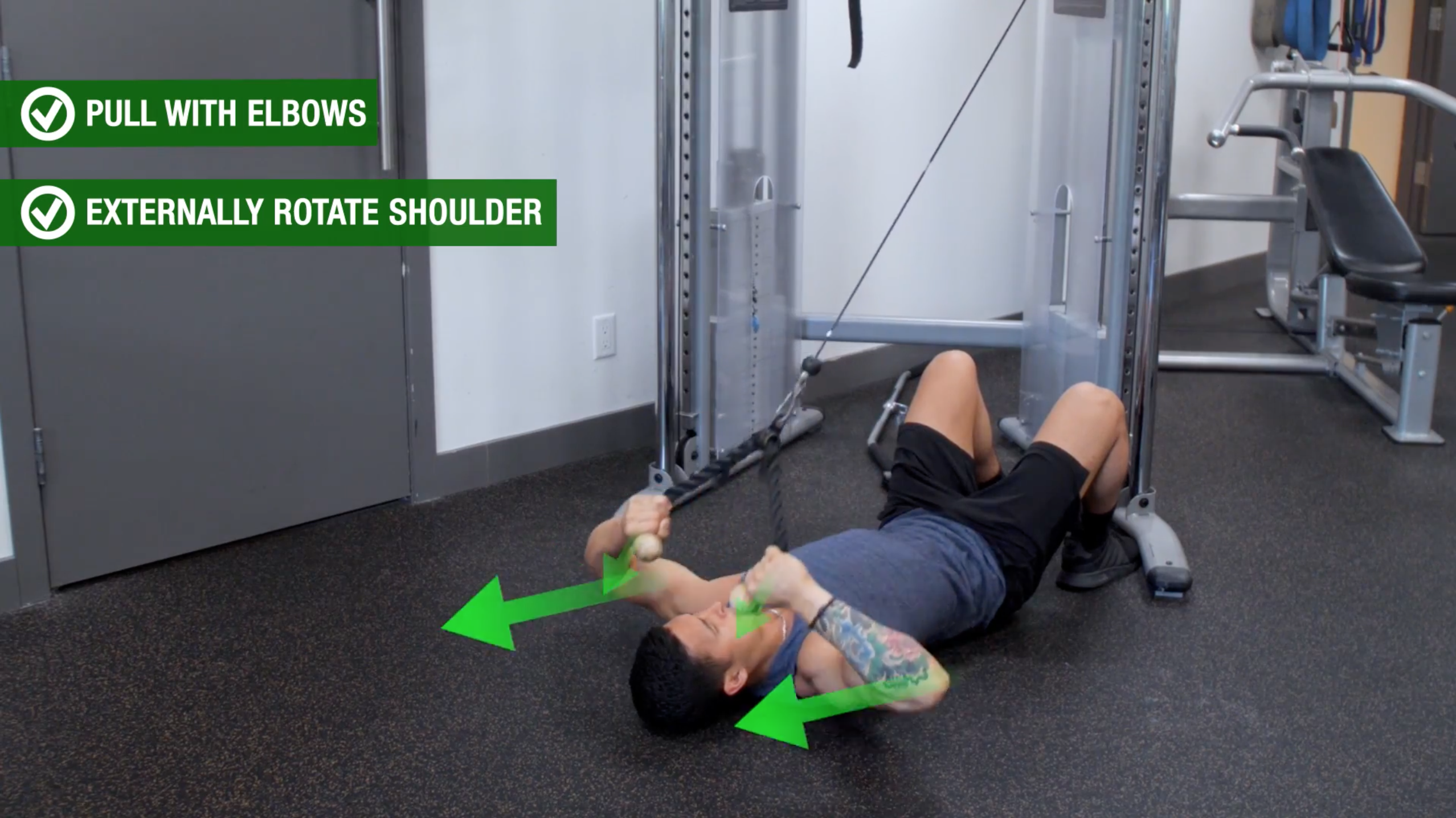
Think about pulling with the elbows until they touch the ground while externally rotating the shoulder. Your hands should almost be touching the ground.
I’d suggest using a relatively light weight for these and a higher rep range of roughly 10-15 reps.
By again thinking about simply driving the elbows up and behind the body.
4) Rear Delt Cable Pull
The last exercise is called the rear delt cable pull. This movement is another great exercise to hit the rear delts with a lighter weight and higher reps. This exercise is especially effective if you struggle with your neck, traps, or mid-back taking over control on other rear delt exercises.
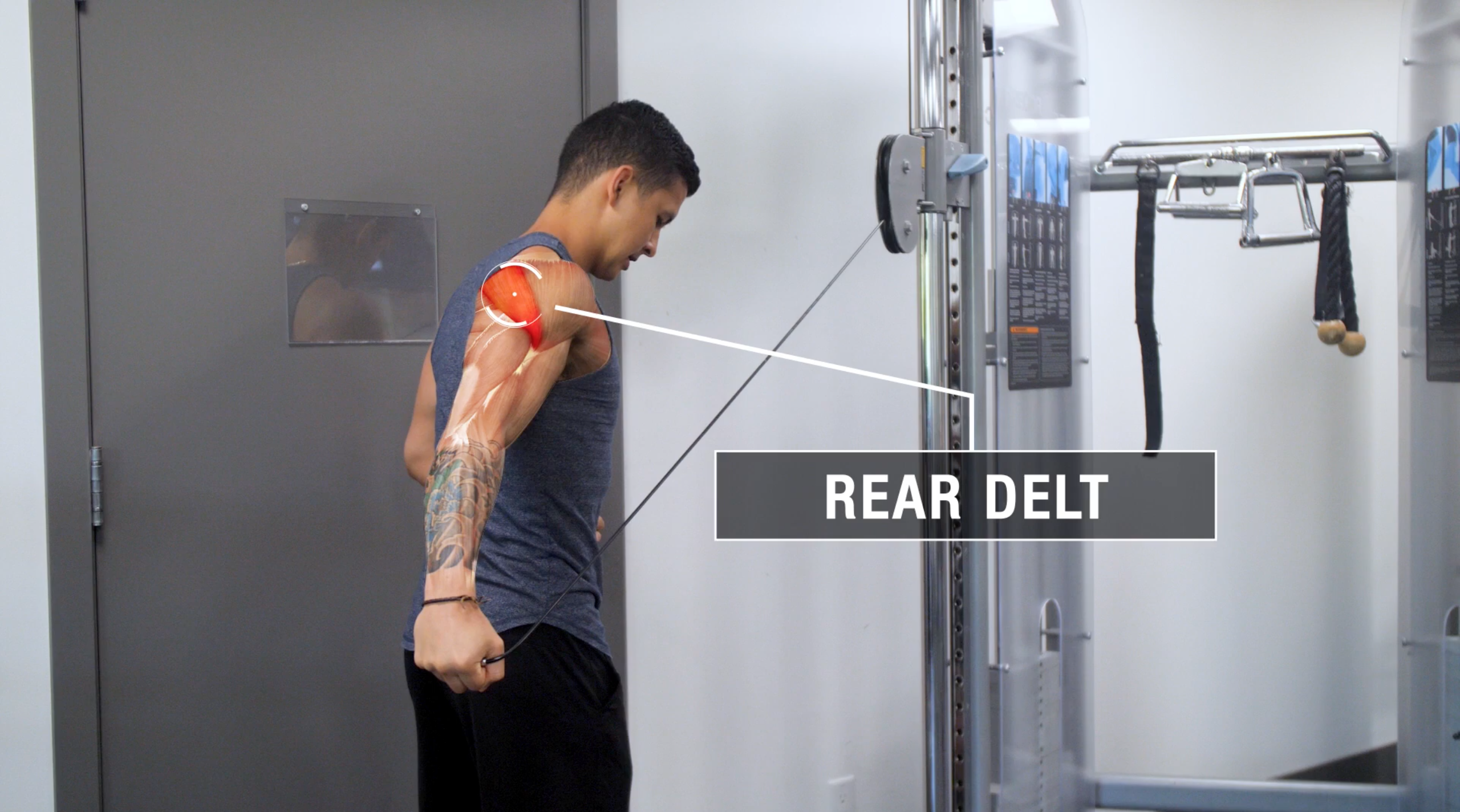
This is because the end range of this movement involves bringing the arm into hyperextension behind the body, which anatomical analyses have shown to be one of the primary functions of the rear delts and is a position where other muscle groups like the lats and traps are very weak in.
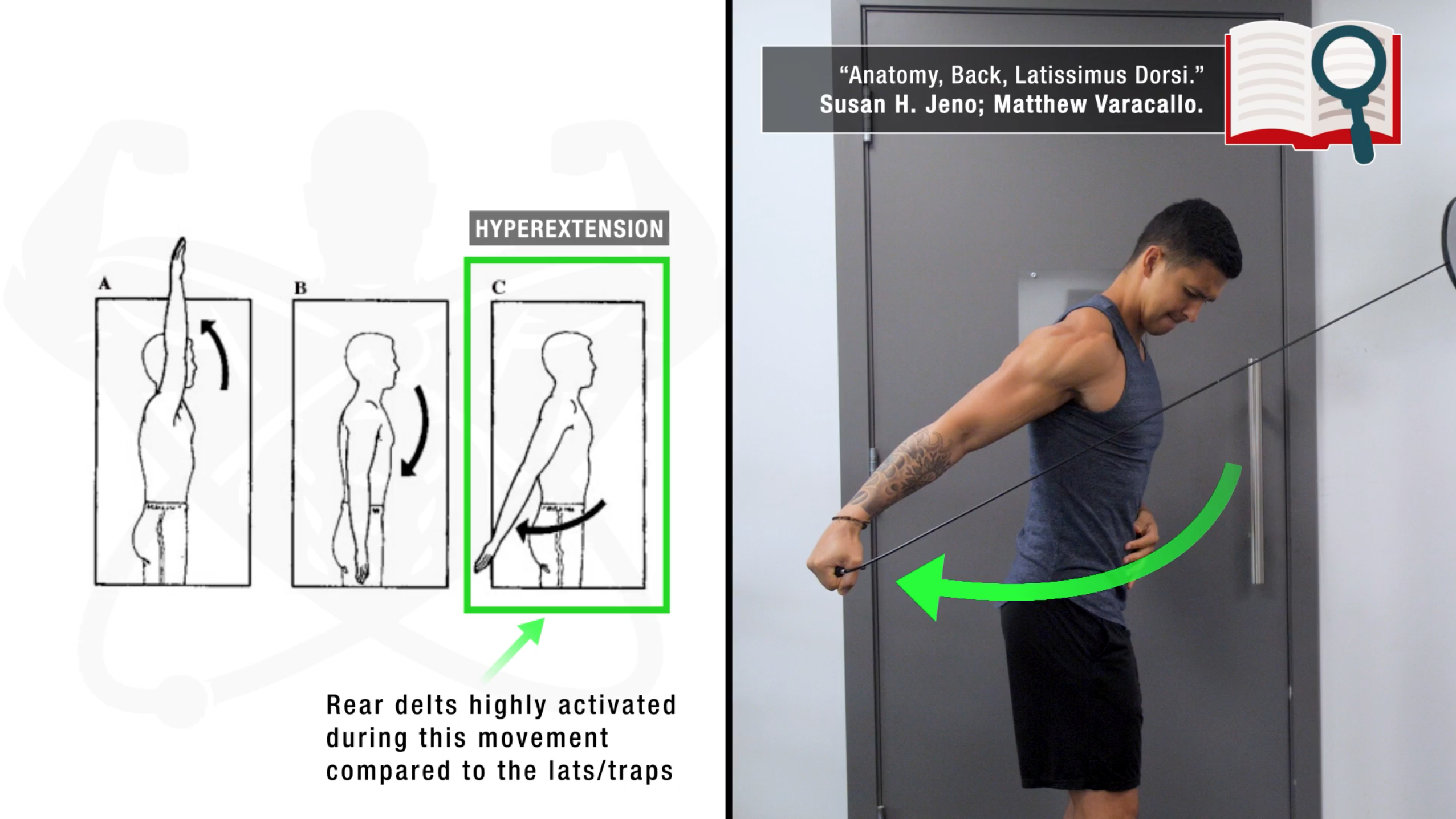
To properly perform this exercise, set up the cable just higher than shoulder height.
Grab the ball of the cable with no handle. Bring your slightly bent arm down and back behind your body at a 45-degree angle away from your side.
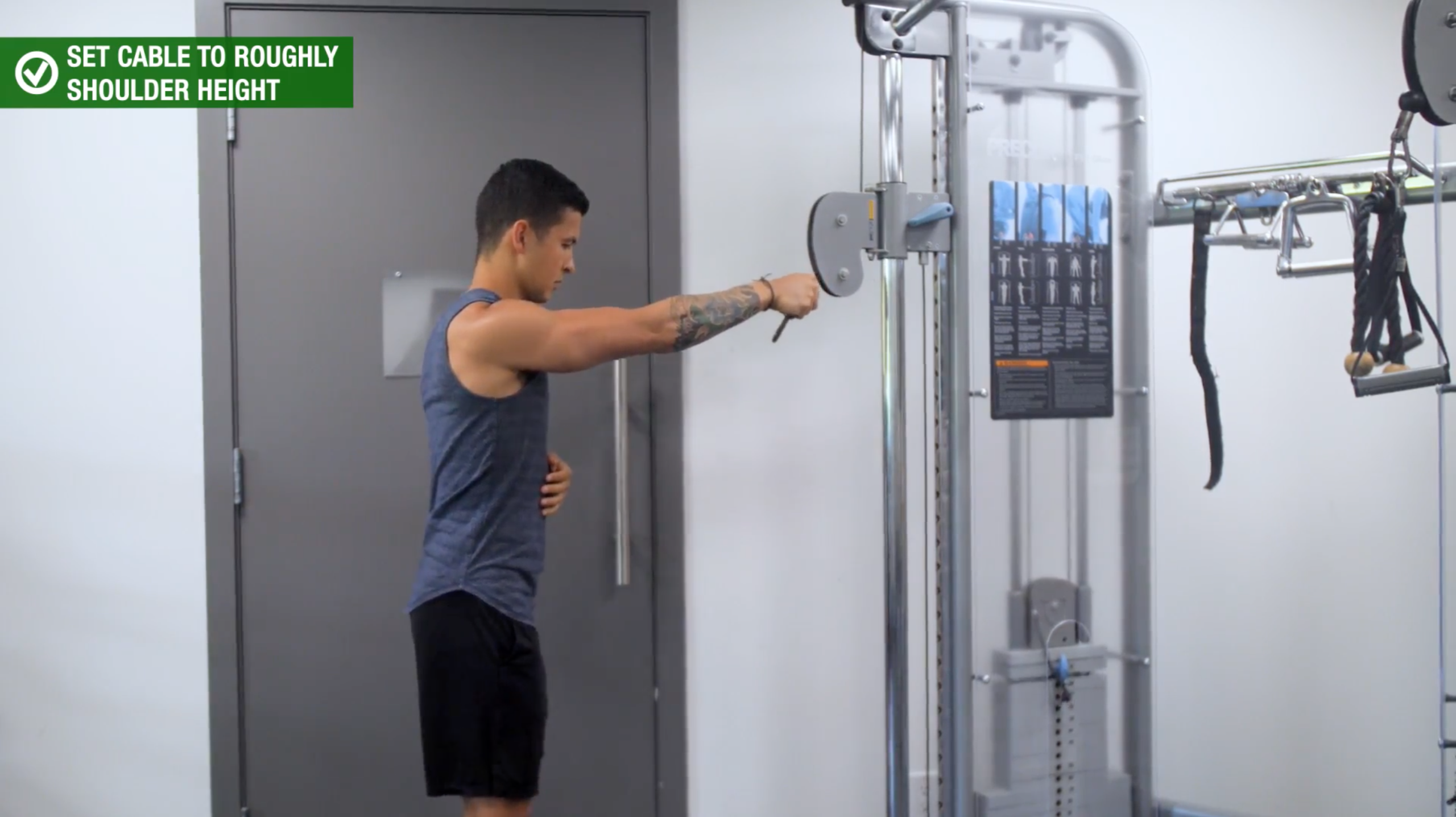
Keep your elbow locked throughout each rep. Externally rotate your shoulder by twisting your arm and hand outward as you bring the cable down.
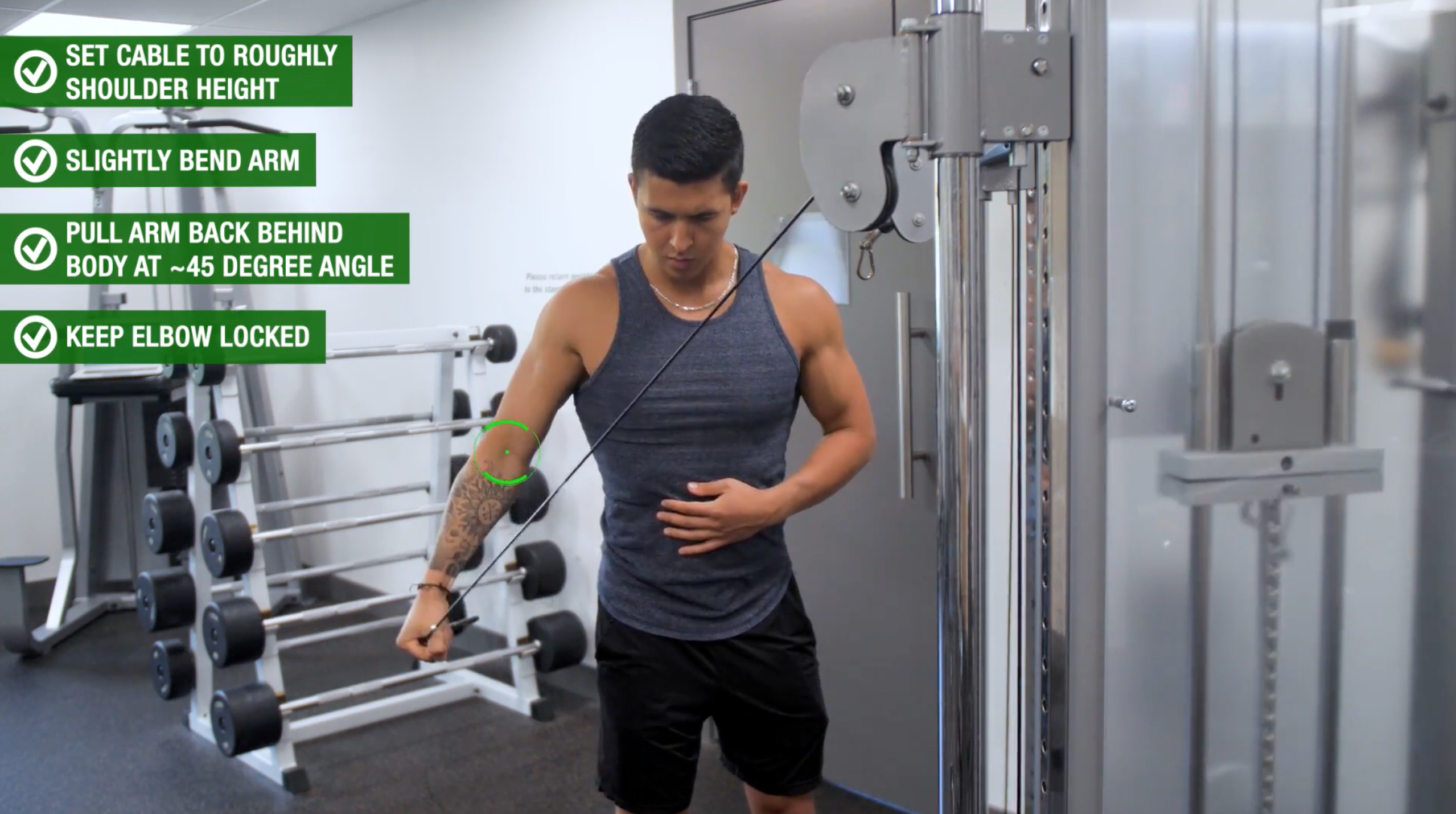
The triceps will be involved to an extent. But when this exercise is performed correctly, you should feel a strong contraction in the rear delts.
I suggest experimenting with your arm angle. Try the movement both close and further away from your side. This experimentation should help you find what feels best for you.
For this exercise, I suggest using a lighter weight and aiming for roughly 15-20 reps per set.
So here’s a summary of the exercises I went through with the recommended sets and reps.
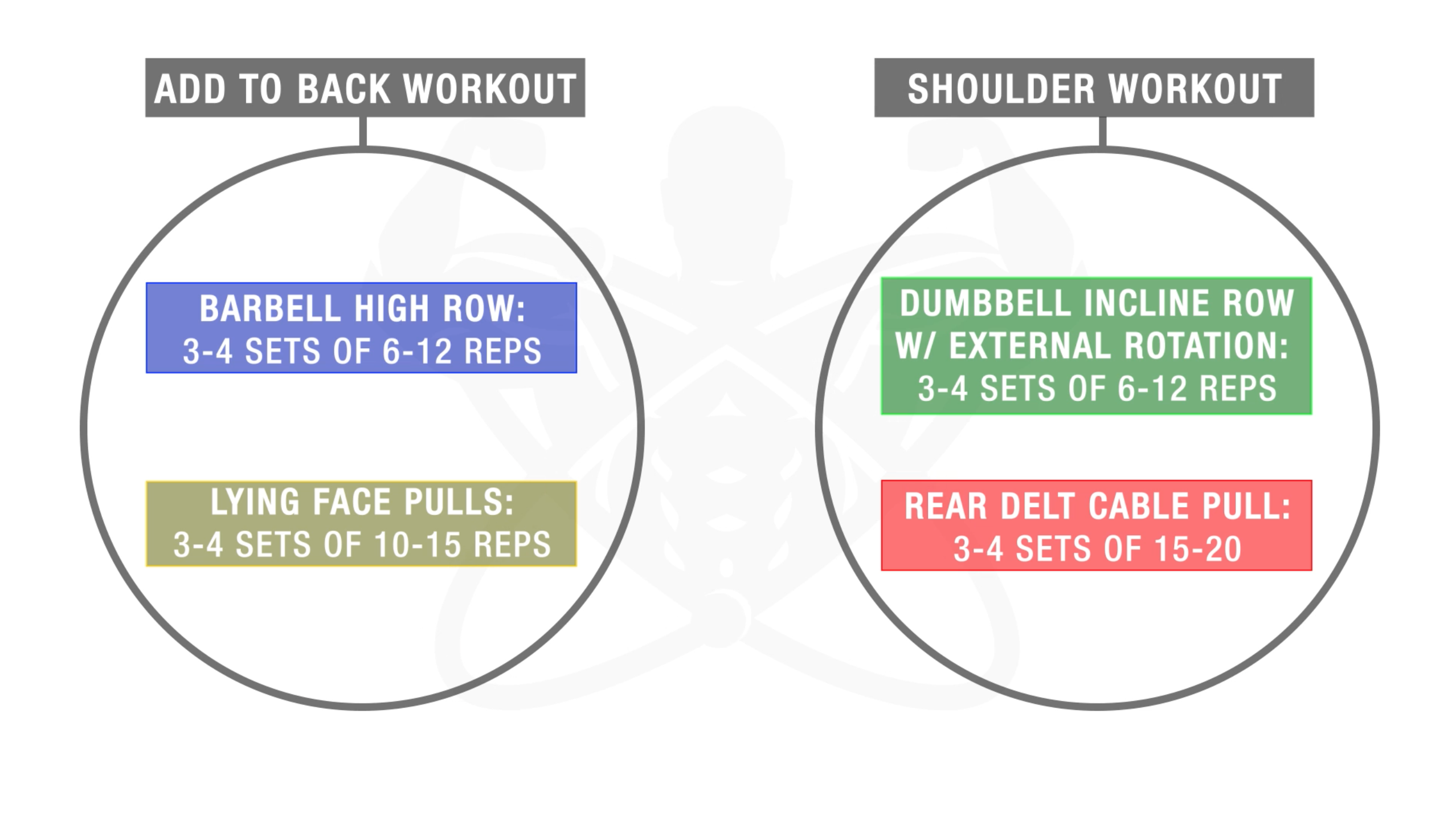
Rather than performing this as a workout, I recommend distributing these exercises within a couple of workouts. Doing these exercises throughout the week will help you to allocate more weekly volume to your rear delts.
For example, you can add two exercises into your back workout, and two exercises into your shoulder workout. This will help you develop your rear delts faster.
Don't let the size of the rear delts fool you, as they are incredibly important.
It’s key muscle groups like the rear delts that are often overlooked. But these seemingly insignificant muscle groups are important, as they make a massive difference in your appearance visually and in preventing muscle imbalances.
Within my Built With Science programs, there’s a high priority placed on training key muscle groups like the rear delts .
These exercises are integrated into your weekly weights routines so that you can effectively transform your body without developing imbalances in the process. For more information:
Click the button below to take my analysis quiz to discover the best program for you:
↓
I hope you enjoyed this article and found it useful! Don’t forget to give me a follow and connect with me on Instagram, Facebook, and Youtube as well, in order to stay up to date with my content. Cheers!



